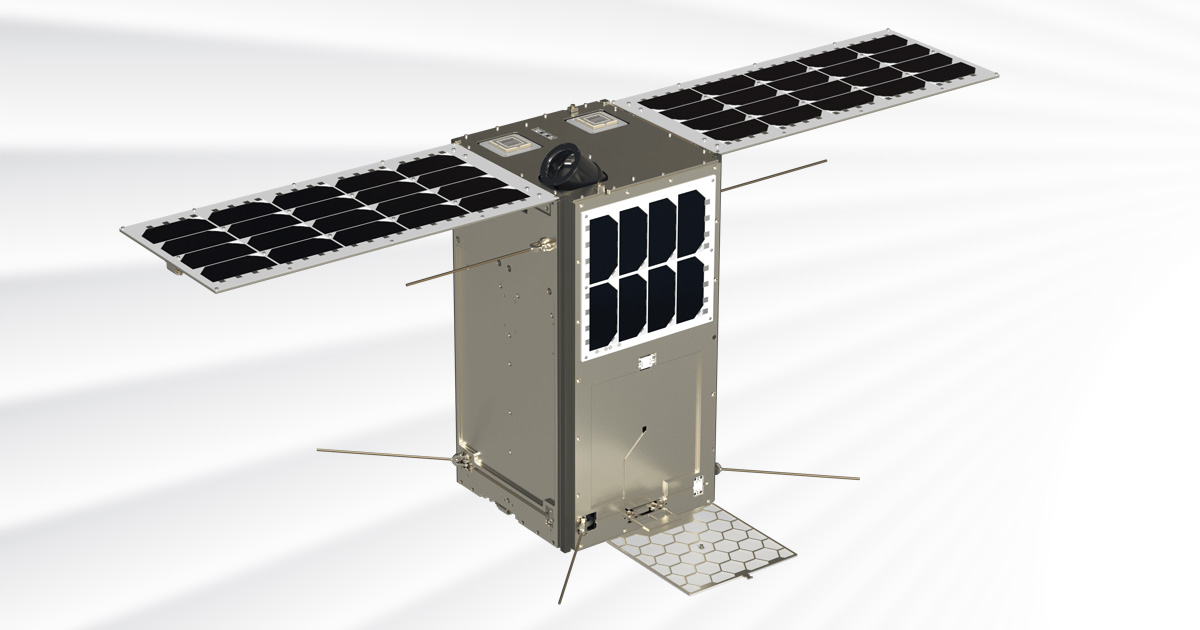In collaboration with the National Research University – Lobachevsky State University of Nizhny Novgorod (NRU UNN), Geoscan has developed the first Geoscan 16U platform-based satellite as part of the Space-π educational project. The ‘Lobachevsky’ microsatellite will be the first 16U CubeSat device designed for agricultural and environmental research.
Our specialists will equip it with a payload consisting of hyper- and multispectral cameras, to enable vegetation monitoring operations and provide data for the advancement of precision agriculture and land management. To enhance the quality and speed of crop analysis, images from the cameras will be processed using artificial intelligence at the UNN computing center. Spectral imaging requires transmitting large volumes of data from the orbit — for this purpose, the 'Lobachevsky' is equipped with a high-speed COMMX transmitter developed by Geoscan. It reaches a throughput of up to 250 Mbps.
The satellite will also carry an analog cross-band radio signal repeater. This device will enable ham radio enthusiasts to communicate over distances of up to 3,000 km using household Walkie-Talkie radios. The satellite’s frequencies have already been coordinated with the International Amateur Radio Union (IARU).
The repeater board contains memristors — components that change their resistance based on the electric charge that flows through them. UNN scientists will send data read/write commands several times a week to test the memristors’ functionality in outer space.
‘Lobachevsky’ launch is scheduled for summer 2025. The satellite will begin its journey 515 kilometers above Earth in a near-polar orbit.
“We’ve been working with 3U CubeSat educational satellites for the last three years. During this time, we have gained valuable experience in managing a small satellite constellation. In 2024, the development team took on a new challenge — creating a 16U satellite platform (approximately 20×20×40 cm). The first small satellite of this form factor is ‘Lobachevsky’, developed for UNN as part of the Space-π project operated by the Foundation for Assistance to Small Innovative Enterprises. This scientific and educational satellite opens new horizons in Earth remote sensing. The 16U CubeSat form-factor satellites are equipped with advanced orientation and communication systems, which makes them suitable for a variety of research and commercial applications. We plan to develop our satellite constellation further and to continue providing custom spacecraft design services, fostering innovation and progress in the space industry”, says Alexander Khokhlov, Head of the Microsatellite Projects Department at Geoscan.
The Geoscan 16U satellite platform is a 16U CubeSat form-factor spacecraft for Earth remote sensing. The platform provides power supply, satellite control, orientation, stabilization, two-way communication with the ground station, and is designed to operate in a low Earth orbit at an altitude of 400–600 km.
The platform’s solar panels feature gallium arsenide photovoltaic converters (PVCs). This material resists radiation and temperature fluctuations more effectively, increasing the solar panels’ average orbit-generated power by over 50% compared to silicon PVCs.
